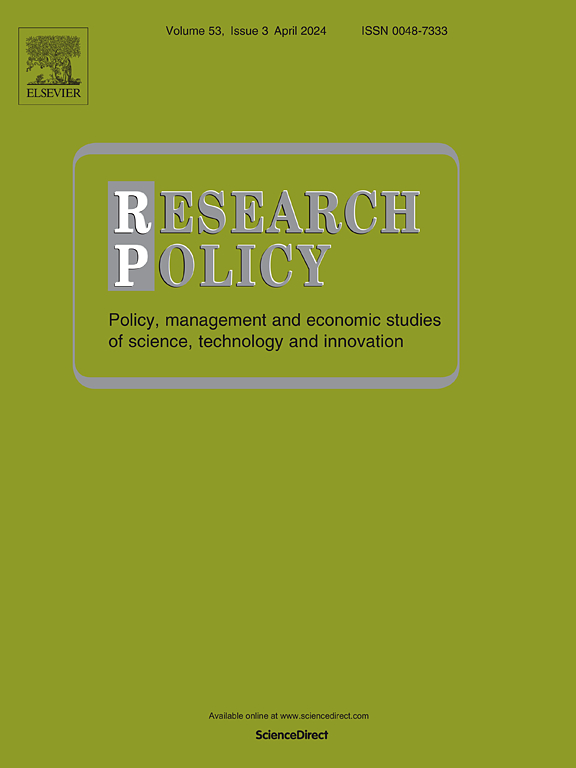A problem half-solved is a problem well-stated: Increasing the rate of innovation through team problem discovery
IF 8
1区 管理学
Q1 MANAGEMENT
引用次数: 0
Abstract
When turning ideas into innovation, current theories argue that a clear problem is essential throughout the innovation process because it enhances several team dynamics while generating and implementing ideas. However, such clarity can also hinder a team's ability to pivot or adapt their project when needed. To address this tension, we conducted a field study on 579 teams participating in an innovation competition at a Fortune Global 500 company to investigate how the level of problem clarity over time affects idea implementation in teams. Our results show that when teams began with lower levels of problem clarity and then gained higher clarity over time based on prior work developing ideas for the solution, a process we call “team problem discovery,” ∼80 % of these teams completed their respective project in the organization. But when following a more traditional innovation process, in which they began with higher clarity and then maintained it throughout a project, only ∼50 % of teams completed their project. These findings challenge prior assumptions in literature and offer several theoretical insights into the way teams can engage in problem solving and build shared cognition over time to increase the rate of innovation in organizations.

解决了一半的问题是一个表述得很好的问题:通过团队发现问题来提高创新的速度
当将想法转化为创新时,目前的理论认为,在整个创新过程中,一个明确的问题是必不可少的,因为它在产生和实施想法的同时增强了几个团队的动力。然而,这种明确性也会阻碍团队在需要时调整项目的能力。为了解决这种紧张关系,我们对一家财富全球500强公司参加创新竞赛的579个团队进行了实地研究,以调查随着时间的推移,问题清晰度的水平如何影响团队中的想法实施。我们的结果表明,当团队从较低水平的问题清晰度开始,然后随着时间的推移,基于先前的工作开发解决方案的想法,获得更高的清晰度时,我们称之为“团队问题发现”的过程,这些团队中有80%完成了组织中各自的项目。但是,当遵循更传统的创新过程时,他们从更高的清晰度开始,然后在整个项目中保持它,只有~ 50%的团队完成了他们的项目。这些发现挑战了文献中先前的假设,并为团队解决问题的方式提供了一些理论见解,并随着时间的推移建立了共同的认知,以提高组织的创新速度。
本文章由计算机程序翻译,如有差异,请以英文原文为准。
求助全文
约1分钟内获得全文
求助全文
来源期刊

Research Policy
MANAGEMENT-
CiteScore
12.80
自引率
6.90%
发文量
182
期刊介绍:
Research Policy (RP) articles explore the interaction between innovation, technology, or research, and economic, social, political, and organizational processes, both empirically and theoretically. All RP papers are expected to provide insights with implications for policy or management.
Research Policy (RP) is a multidisciplinary journal focused on analyzing, understanding, and effectively addressing the challenges posed by innovation, technology, R&D, and science. This includes activities related to knowledge creation, diffusion, acquisition, and exploitation in the form of new or improved products, processes, or services, across economic, policy, management, organizational, and environmental dimensions.
 求助内容:
求助内容: 应助结果提醒方式:
应助结果提醒方式:


